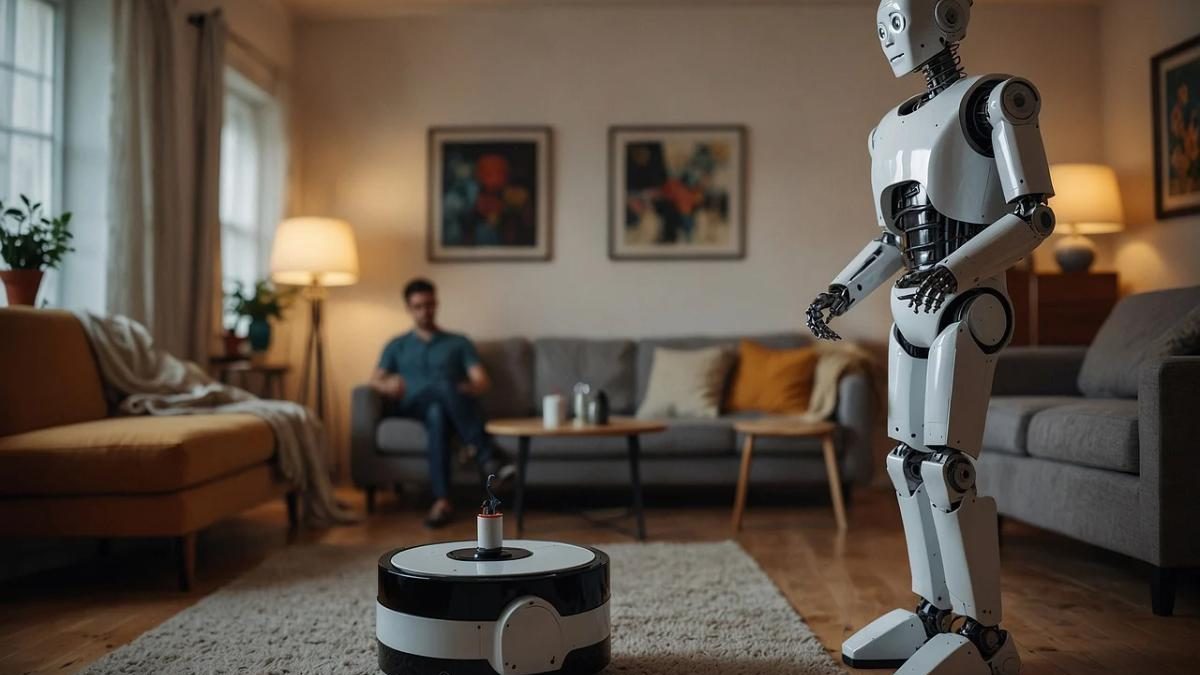Collaborative robots, or cobots, have emerged as a transformative force in the US manufacturing landscape. Unlike traditional industrial robots, which are typically caged off and designed to operate independently from human workers, cobots are built to work alongside people, enhancing productivity while ensuring safety. As the manufacturing sector faces increasing pressure to stay competitive, the integration of cobots offers a promising solution to many of the industry’s most pressing challenges.
Table of Contents
ToggleThe Rise of Cobots in the US Manufacturing Landscape
The adoption of cobots in US manufacturing has been on a steady rise, with industries like automotive, electronics, and aerospace leading the charge. In the past few years, cobots have become more prevalent, driven by technological advancements, economic factors, and a growing recognition of their benefits.
Cobots have moved from being a novelty to a necessity for many manufacturers. The key driving forces behind this shift include the need to reduce operational costs, improve efficiency, and respond to the growing demand for customized products. Additionally, as regulations around workplace safety have become more stringent, cobots have emerged as a practical solution that enhances safety while maintaining productivity.
Operational Impact of Cobots on US Manufacturing
Cobots have significantly enhanced efficiency and productivity in manufacturing. They excel in tasks such as assembly, packaging, and quality control—areas where precision and consistency are paramount. Unlike traditional robots, cobots are flexible and can be easily reprogrammed to perform different tasks, making them ideal for manufacturers who need to adapt to changing production demands quickly.
For instance, in small-batch production runs, cobots can be deployed to perform repetitive tasks that would otherwise require human workers to spend excessive amounts of time and effort. This flexibility allows manufacturers to scale their operations up or down as needed, without the overhead costs associated with hiring and training new employees.
Cost reduction is another significant benefit of cobots. By automating repetitive tasks, cobots reduce labor costs and minimize downtime caused by human errors. Over time, the financial benefits of deploying cobots far outweigh the initial investment, making them a cost-effective solution for manufacturers looking to stay competitive.
Cobots and Workforce Transformation
One of the most significant advantages of cobots is their ability to augment human workers rather than replace them. Cobots are designed to work safely alongside people, taking on tasks that are repetitive, physically demanding, or dangerous. This not only helps to prevent workplace injuries but also frees up human workers to focus on more complex and creative tasks.
As the US manufacturing workforce continues to age, and skill shortages become more pronounced, cobots play a crucial role in filling these gaps. By taking on tasks that are typically hard to staff, cobots help manufacturers maintain productivity even when facing labor shortages. Moreover, the presence of cobots can make manufacturing jobs more attractive to younger workers, who may be drawn to the opportunity to work with cutting-edge technology.
Upskilling the workforce is another critical aspect of cobot integration. As cobots take over repetitive tasks, there is a growing need for workers who can operate, program, and maintain these machines. Training programs and initiatives are emerging to help workers acquire the necessary skills, ensuring that they can thrive in a manufacturing environment increasingly dominated by advanced technologies.
Technological Innovations
The future of cobots in US manufacturing is closely tied to advancements in artificial intelligence (AI) and machine learning. These technologies are making cobots smarter and more autonomous, allowing them to perform tasks that were once thought to be too complex for automation. As AI continues to evolve, cobots will become even more capable, taking on a broader range of tasks and interacting more seamlessly with human workers.
The integration of cobots with Industry 4.0 and the Internet of Things (IoT) is another exciting development. In a smart manufacturing environment, cobots can communicate with other machines and systems in real-time, enabling predictive maintenance and optimizing production processes. This level of connectivity not only improves efficiency but also reduces the risk of unexpected downtime, further enhancing the appeal of robots for manufacturers.
Innovations in cobot design are also making these machines more user-friendly and versatile. Modern cobots are ergonomically designed, with intuitive interfaces that make them easy to program and operate. Additionally, advancements in mobility are allowing cobots to move freely around the factory floor, performing tasks wherever they are needed.
Conclusion
Collaborative robots are transforming US manufacturing in profound ways. From enhancing efficiency and productivity to augmenting the workforce and driving technological innovation, cobots are reshaping the industry for the better. As manufacturers continue to embrace this technology, the benefits will only grow, making it clear that industrial robotic automation isnot just a passing trend but a vital component of the future of manufacturing.
For manufacturers looking to stay ahead, investing in cobots is not just a smart choice—it’s a necessary one. The era of cobots is here, and those who embrace it will be well-positioned to thrive in the competitive landscape of modern manufacturing.
Related posts
Hot Topics
What is Kafka Used For: A Complete Guide
What is Kafka used for? If you’ve been diving into the world of distributed systems, microservices, or data streaming, you’ve…
How Do Password Managers Work? The Guide That Finally Makes Sense
Ever wonder how do password managers work and whether they’re actually safe? I get it. The idea of putting all…



